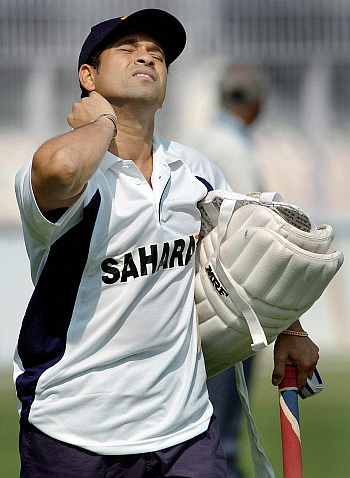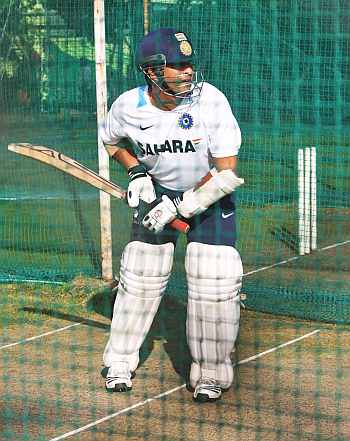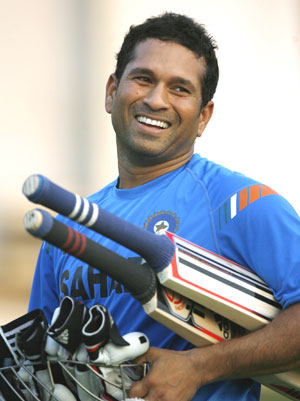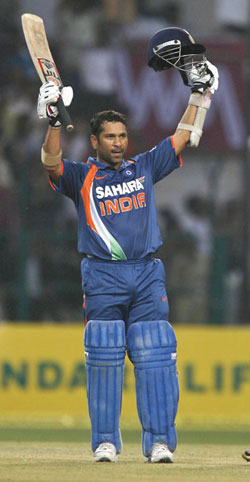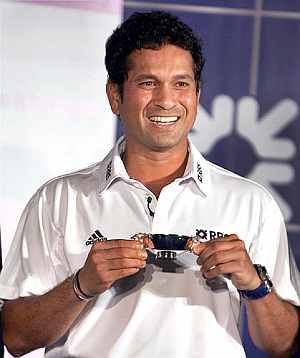 | « Back to article | Print this article |
Tendulkar bears immense burden at World Cup
Sachin Tendulkar, possessor of every one-day batting record worth holding, carries an unparalleled weight of expectation over the course of the next two months.
Even the incomparable Australian Don Bradman, whose feats at the crease during the Great Depression sustained an emerging nation's morale, did not endure the pressure Tendulkar will confront at the 10th World Cup opening in Dhaka on Feb. 19.
According to the historian Ramachandra Guha, Tendulkar is the best-known Indian alive with a status equivalent to a Hindu god or a Bollywood film star.
'Batsmen walk out into the middle alone, not Tendulkar'
When he faced the former Pakistan opening bowler Wasim Akram the television audience in India exceeded the entire population of Europe.
"Batsmen walk out into the middle alone," wrote the Indian poet and critic C.P. Surendran.
"Not Tendulkar. Every time Tendulkar walks to the crease, a whole nation, tatters and all, marches with him to the battle arena.
"A pauper people pleading for relief, remission from the lifelong anxiety of being Indian, by joining in spirit their visored saviour."
'I still want to achieve something and everyone knows that'
Tendulkar scored his 51st test century this year after a duel with South African fast bowler Dale Steyn recalling Bradman's jousts with England's Harold Larwood in the 1932-33 Bodyline series.
Three more one-day hundreds in the World Cup climaxing in his native Mumbai on April 2 would make him the only batsman to total 100 centuries over both forms of the game, a landmark which like Bradman's test average of 99.94 would probably last forever.
"I still want to achieve something and everyone knows that," Tendulkar, 37, said last month at a ceremony to celebrate India's number one spot in the world Test rankings.
WC 2011 can serve as a perfect farewell for Master Blaster
The explosion in the one-day game in India, which made the country the richest and most powerful nation in world cricket, followed their upset win over West Indies in the 1983 final under the inspired captaincy of all-rounder Kapil Dev.
At subsequent World Cups they have not played to their potential, reaching only one other final when they were demolished by an outstanding Australian side in 2003.
To exploit home advantage, India have packed their side with full- and part-time spinners in the knowledge that when the knockout stages eventually get away in late March temperatures will be soaring and the pitches will deteriorate faster.
And this tournament can serve as a perfect farewell for the Master Blaster.
India has a good chance of going all the way
Fourteen teams have been divided into two groups for the tournament, co-hosted by India, Sri Lanka and Bangladesh, with the top four from each division advancing to the quarter-finals.
The first round follows a week of warmup matches, further extending an already overlong competition, and on paper looks soporifically predictable.
In Group A, defending champions Australia, New Zealand, Pakistan and Sri Lanka would have to seriously under-perform to miss qualifying ahead of Zimbabwe, Canada and Kenya.
Group B holds marginally more interest. Bangladesh barely hold their own in Test cricket but they can be a force in the one-day game, especially on their own pitches as a 4-0 drubbing of New Zealand late last year testified.
With a host of slow, naggingly accurate bowlers on sluggish pitches, Bangladesh could well qualify at the expense of West Indies in a group including India, England, South Africa, Ireland and the Netherlands.

© Copyright 2025 Reuters Limited. All rights reserved. Republication or redistribution of Reuters content, including by framing or similar means, is expressly prohibited without the prior written consent of Reuters. Reuters shall not be liable for any errors or delays in the content, or for any actions taken in reliance thereon.
